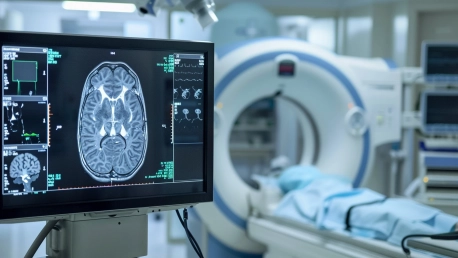FlexView Diagnostic, a groundbreaking medical image viewer developed by Radical Imaging, has recently gained significant attention following its FDA approval for diagnostic use. This cloud-based, software-as-a-service (SaaS) solution is set to transform medical image viewing by providing healthcare professionals with seamless access to diagnostic images. As a web-based DICOM medical image viewer, FlexView Diagnostic eliminates the need for local software installations, streamlining the diagnostic process and enhancing overall efficiency in healthcare settings. The successful integration of this technology offers numerous benefits that span across ease of access, advanced imaging capabilities, and improved operational efficiencies.
Streamlining Diagnostic Processes with Cloud-Based Access
One of the most notable features of FlexView Diagnostic is its cloud-based architecture. By offering healthcare professionals the ability to access medical images directly from the cloud, the need for physical software installations on individual devices is removed. This not only eases the burden of IT management but also ensures that radiologists and clinicians can view and interpret images from virtually anywhere, provided they have internet access. This flexibility can lead to faster turnaround times for diagnoses, ultimately improving patient care and optimizing resource allocation within healthcare facilities.Moreover, the cloud-based design of FlexView Diagnostic means that updates and maintenance can be handled centrally. This reduces downtime and ensures that users always have access to the latest features and improvements without the hassle of manual updates. The scalability of the cloud also allows healthcare institutions to manage large volumes of data efficiently, making FlexView Diagnostic a suitable choice for facilities of any size. The increased data handling capability makes it particularly beneficial for large hospital networks that require consistent and reliable access to medical images across multiple departments and locations.
Advanced Imaging Features for Enhanced Diagnostic Accuracy
FlexView Diagnostic is packed with advanced imaging features that provide a robust toolset for radiologists and clinicians. Among these features is 3D rendering, which allows users to visualize medical images in three dimensions. This advanced capability is particularly useful for understanding complex anatomical structures and can lead to more accurate diagnoses and treatment plans. By providing a more comprehensive view of the patient’s anatomy, the software aids in the detection of subtle pathologies that might be overlooked in traditional 2D imaging, thus enhancing diagnostic accuracy and outcomes.Another critical feature is multi-modality fusion, which enables the integration of various imaging data types, such as CT and MRI scans, into a single cohesive view. This holistic approach allows healthcare professionals to have a more comprehensive understanding of a patient’s condition, as they can analyze data from multiple sources in one streamlined interface. Additionally, the ability to segment images—isolating specific regions or tissues for closer examination—proves invaluable when identifying and evaluating anomalies or pathologies within the body. These features collectively contribute to more precise and reliable diagnostic processes, ultimately benefiting patient care and treatment efficacy.
Seamless Integration with Existing Healthcare Systems
FlexView Diagnostic excels in its ability to integrate easily with current healthcare platforms. Radical Imaging has designed the software to be incorporated into existing systems within a single day, greatly minimizing operational disruptions during the transition period. This ease of integration is particularly advantageous for healthcare institutions looking to upgrade their imaging capabilities without facing extensive downtimes or significant overhauls. The seamless integration ensures that existing workflows are maintained, and healthcare professionals can continue to deliver patient care with minimal interruption.The compatibility of FlexView Diagnostic with various healthcare platforms underscores its versatility and utility across different healthcare environments. Whether a small clinic or a large hospital network, the software can adapt to meet the specific needs of the institution, enhancing the overall diagnostic process without requiring significant changes to current workflows. By facilitating a smooth and rapid transition, FlexView Diagnostic enables healthcare providers to adopt cutting-edge imaging technology with confidence, knowing that their operations will not be adversely affected.
User-Centric Design for Radiologists and Clinicians
At the heart of FlexView Diagnostic’s innovation is its focus on user experience. The software’s intuitive and user-friendly interface is tailored specifically for radiologists and clinicians who require efficient, robust tools for accessing and interpreting medical images. This user-centered design philosophy ensures that healthcare professionals can navigate through the software with minimal learning curve, allowing them to focus more on patient care. By prioritizing ease of use, FlexView Diagnostic enables clinicians to spend less time on software navigation and more time on critical diagnostic tasks.The interface of FlexView Diagnostic is designed to handle large imaging studies seamlessly. This capability ensures that healthcare professionals dealing with extensive data sets can load and navigate these studies swiftly, without any lag or interruption. This efficient handling of large datasets is crucial during critical diagnostic phases, where time is often of the essence. The software’s responsiveness and performance ensure that radiologists can work efficiently, even when dealing with high-resolution images and complex imaging studies, ultimately contributing to improved diagnostic accuracy and speed.
Limitations and Regulatory Compliance
While FlexView Diagnostic boasts numerous advanced features, it does have some limitations. Notably, the software is not intended for primary mammographic image diagnosis. Mammography requires highly specialized tools that FlexView Diagnostic does not currently offer. Additionally, despite its robust capabilities, the FDA approval does not extend to the use of FlexView Diagnostic on mobile devices for diagnostic purposes. This indicates that its application is currently confined to traditional computing environments, which may limit its use in scenarios where mobile access could be beneficial.Radical Imaging’s commitment to regulatory compliance is evident through the rigorous quality process and expert technical support associated with FlexView Diagnostic. The recent FDA approval as a class II medical device assures users of the software’s reliability and suitability for diagnostic use in clinical settings. This compliance underscores the company’s dedication to providing secure and scalable solutions in the medical imaging field. By meeting stringent regulatory standards, Radical Imaging reinforces the trust placed in its products by healthcare professionals, ensuring that they can rely on FlexView Diagnostic for critical diagnostic tasks.
Collaborative Development and Industry Impact
FlexView Diagnostic, an innovative medical image viewer developed by Radical Imaging, has recently made waves with its FDA approval for diagnostic use. This cloud-based, software-as-a-service (SaaS) technology is poised to revolutionize the way healthcare professionals access medical images. As a web-based DICOM image viewer, FlexView Diagnostic does away with the necessity for local software installations, thereby streamlining the diagnostic process and boosting overall efficiency in healthcare environments. The successful implementation of FlexView Diagnostic offers a range of advantages, including easy accessibility, advanced imaging capabilities, and enhanced operational efficiencies, which altogether promise to elevate the standard of patient care. Following its FDA clearance, it’s expected that more medical facilities will adopt this state-of-the-art solution, leading to more accurate diagnoses and ultimately better patient outcomes. The technology’s ability to seamlessly integrate into existing healthcare systems while providing cutting-edge features makes it an indispensable tool for modern medical practices.









